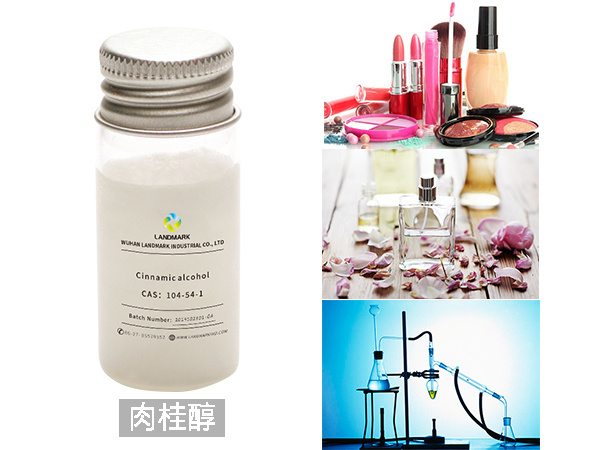
The Application of Cinnamol in the Synthesis of essence and Organic Intermediates
2020-08-28
Cinnamol, English name is CINNAMYL ALCOHOL, alias: phenylpropenol, cinnamyl alcohol, cinnamyl alcohol, beta-phenylpropenol β- Phenylpropenol, TRANS-Cinnamol. Cinnamol, white crystal, soluble in ethanol, propylene glycol and most non-volatile oils, almost insoluble in water and petroleum ether, insoluble in glycerol and non-volatile oils. It has similar aroma of hyacinth and balsam, and has sweet taste.

Main uses of cinnamyl alcohol:
1、 Essence
Cinnamol is mainly used to prepare essence of apricot, peach, raspberry, plum, cosmetics essence and soap essence with mild, lasting and comfortable fragrance, elegant fragrance, and also used as a fixative. Often shared with phenylacetaldehyde, it is an indispensable spice for preparing narcissus essence, rose essence, etc. Cinnamol is a food flavor allowed to be used in accordance with the Hygienic Standard for the Use of Food Additives in China, which is mainly used to prepare fruit essence such as strawberries, lemons, apricots, peaches, and essence for brandy.
2、 Organic synthesis intermediate
It can be used to prepare cinnamyl chloride, and is an excellent raw material for the preparation of long-acting multifunctional vasoconstriction antagonist narizine. At the same time, cinnamyl chloride can also be used to synthesize the anti-microbial drug naphthalene and the anti-tumor drug toremifen. Flunarizine dihydrochloride is a calcium antagonist and can also be synthesized with cinnamyl chloride. Cinnamol is also the raw material used to prepare cinnamate.
2020
/
08-28
Category:
Industry News
Related information—


